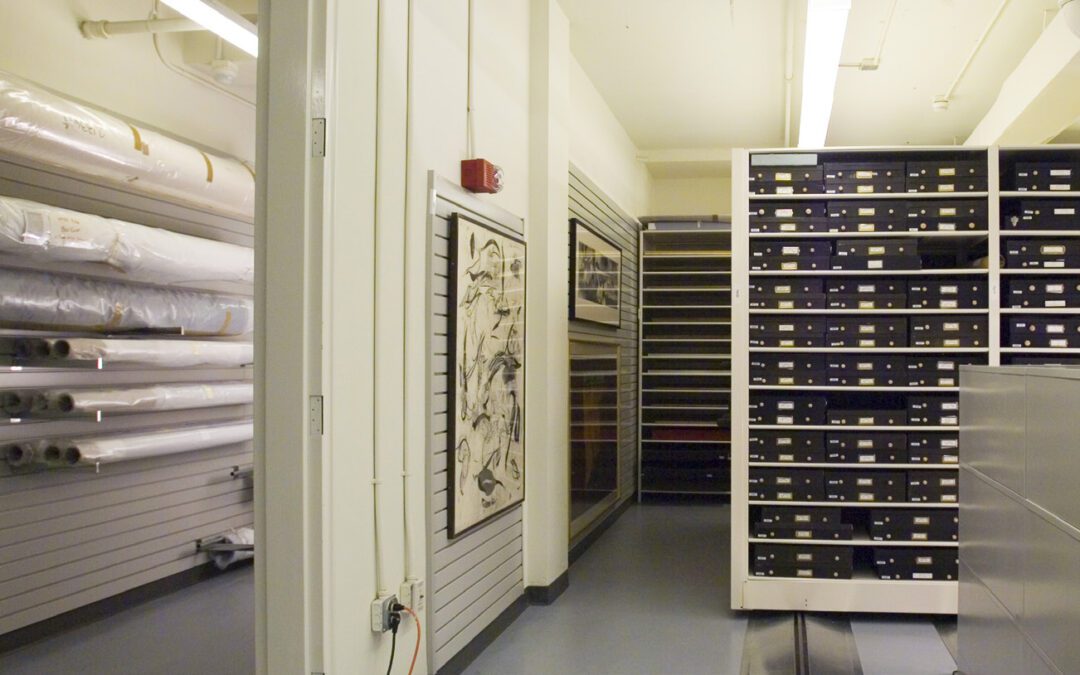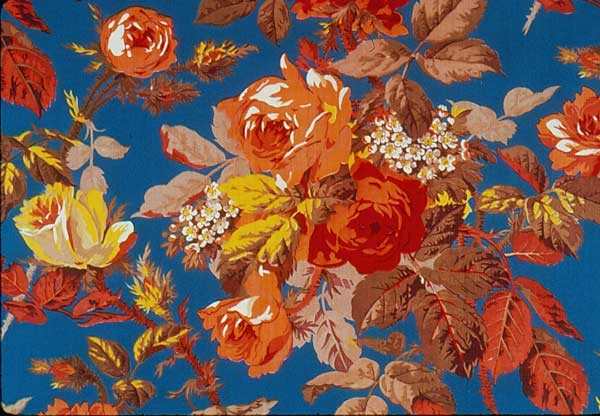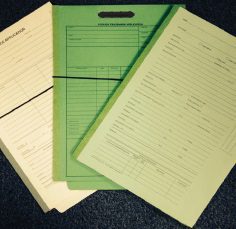
Multiple Storage Solutions for a Multi-Faceted Museum
The Mead Museum houses the art collections of Amherst College, comprising more than 14,000 works of global origin, from Africa to Japan to the Americas. Established in 1949, the museum’s aging storage area was unsuitable for long-term preservation of delicate art works and artifacts. It underwent a renovation project that included a number of new climate-controlled and temperature-segregated rooms.
CHALLENGE
Each storage room was now climatically suited for specific types of items, but the art works to be stored within each room varied widely in size, shape and material. Moreover, the museum’s collections were growing rapidly, and additional storage needed to be found for newly-donated items.
SOLUTION
In discussions with the museum’s director, NOS’s consulting team learned that the collections included paintings, textiles, sculptures, decorative works, and cultural artifacts. Multiple types of storage solutions would be needed to preserve the variety of works safely, while allowing room for growth. The solutions included:
- Sturdy four-post wide-span shelving and slat wall to keep sculpture, artifacts, and decorative works off the floor, safe from moisture.
- Drawers to keep rolled and folded textiles away from destructive humidity and pests.
- High-density mobile storage with drawers and flat files preserved works on paper, while creating extra storage room for future collections.
Today, Mead Museum’s collections are safe and secure with each type of artwork or artifact matched to its ideal storage solution – perfectly preserved examples of the past, perfectly stored for the years to come.
“Now, with everything stored professionally using the most favorable preservation methods, we offer a more suitable environment for our collections and have the ability to accommodate growth in a safe and manageable way.” – Stephen Fisher, Collections Manager
VIEW OR DOWNLOAD THE PDF VERSION

The American Textile History Museum, which houses the most significant, publicly-held, integrated textile collections of clothing, fabrics, tools, spinning wheels and hand looms in America, acquired two large coverlet collections and curators sought to develop a premier storage solution specially designed for its unique needs. Also, the textile collection reached maximum storage capacity, requiring an improved and space-saving solution. By partnering with an ASA member, the museum was able to improve preservation methods and increase storage capacity, allowing for additional space to expand the collections and provide staff with improved accessibility to stored objects.
CHALLENGE
As the American Textile History Museum expanded its cultural reach, the number of museum artifacts broadened with the acquisition of its first clothing and coverlet collection, which created new and unique storage needs for staff members. Also, as the museum’s textile collection expanded, curators had concerns with existing storage space constraints and preservation methods. Fabrics were typically packed in archive boxes that allowed potential exposure to environmental elements and required undesirable folding of fabrics and stacking of archive boxes. Locating items was often difficult, and museum staff had to search through multiple locations and stacks before finding a specific item.
SOLUTION
The ASA member provided consultation for space planning and archival storage solutions to maximize on-site storage, allowing for consolidation of all collections and providing room for growth. Minimizing the storage footprint and increasing capacity enabled the museum to expand its collections and accept additional items that it wouldn’t have been able to otherwise.
The coverlet collection storage is drastically improved with the use of a high-density storage system specially designed to accommodate hanging garments, including top shelves and lower drawer storage for accessory items. Museum cabinets with pull-out drawers were selected to store the museum’s premier hat collection.
To accommodate the expanding collections and accommodate growth, boxed textile storage methods were converted to rolled and hung racks, which improved cloth preservation, minimized handling and made items easily visible and located. With textile rolls condensed on two high-density mobile systems, the museum is able to accommodate its current and future object acquisitions.
To account for each item in the collections, objects are assigned a storage location and entered into a museum artifact database. Items are retrieved and returned to its assigned location after use, minimizing excessive handling and ensuring collection integrity.
“Having the ability to expand storage space provided staff with greater access to the collection, improved preservation and, ultimately, brought in more collections that we wouldn’t otherwise have been able to acquire.” – Karen Herbaugh, Curator
VIEW OR DOWNLOAD THE PDF VERSION

Lawyers specializing in intellectual property law handle a broad range of services including valuating patents, trademarks, copyrights, and structuring licenses to gain the most beneficial business terms. Large or small, simple or complex, the drawings and descriptions of the one-of-a-kind prototypes have to be safely filed in strong, secure file folders. A Washington, D.C. law firm which is consistently ranked among the top U.S. Patent Firms specializing in intellectual property law provides Intellectual Property solutions for businesses in the United States and around the world. Large or small, simple or complex, the client’s portfolio information must be stored securely. They were looking for a vendor that would partner with them to help review their process for more efficiencies and opportunities for cost savings. Premium personalized folders supplied by National Office Systems gave the law firm the storage folders they required, with the same timely and personal level of service that the firm provided its clients.
CHALLENGE
Intellectual property specialists at a Washington, D.C. law firm are tasked with developing their clients a comprehensive I.P. portfolio to successfully maintain and enhance their competitive position within the marketplace. The law firm needed a vendor who would provide one-of-a-kind products and service to match the one-of-a-kind designs of the firm’s clients. They looked for a vendor partner that would work with them to secure client information in a customized folder. The firm was also looking for flexibility to update or change the printing as needed. Another requirement was the need to have folders shipped on demand to their office as space onsite is at a premium.
SOLUTION
National Office Systems (NOS) provided top-quality custom-printed folders that exceeded the firm’s expectations. Their Custom Premium Folders could be updated as needed and flexibility was gained. Pre-buying their supplies for the year through the Store & Ship program proved to be a cost saving decision. National Office Systems will store their folders at no additional charge which allows the firm to receive maximum discounting, save valuable storage space and have their folders ship upon demand. “Timely constructive communication with all parties was essential in meeting the client’s goals,” stated Doug Herman. “Working closely with the end user and the vendor ensured a successful outcome.” With the new supply of well-made personalized folders and a strong vendor partnership, the law firm will be able to continue providing intellectual property solutions in a managed, organized, and secure manner.
VIEW OR DOWNLOAD THE PDF VERSION




Recent Comments